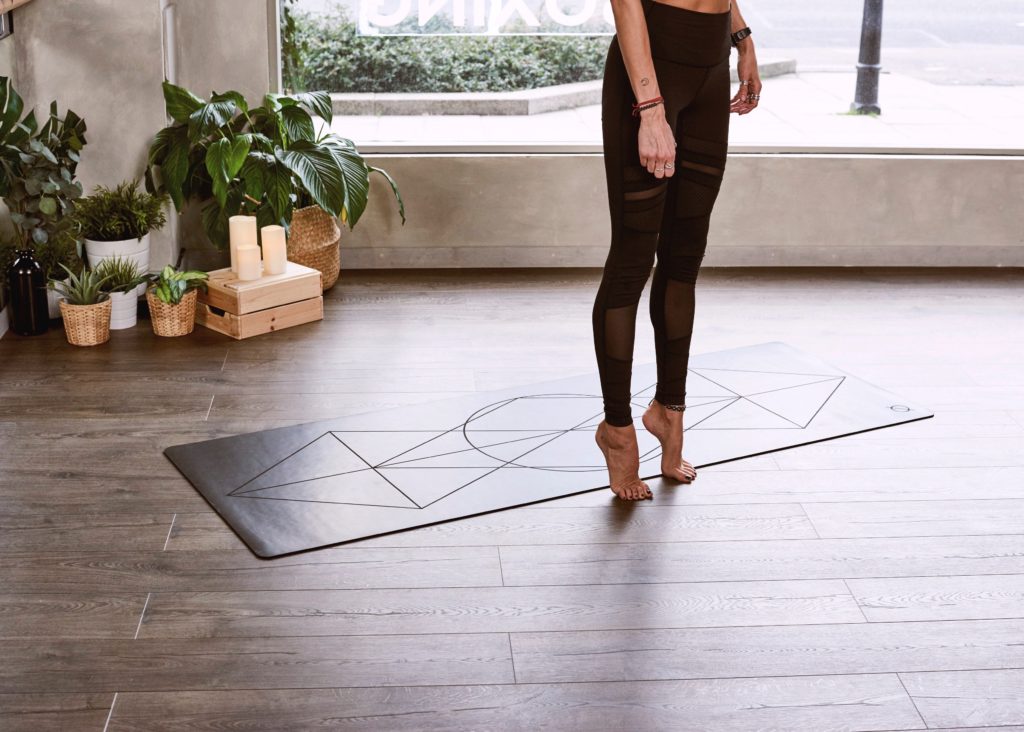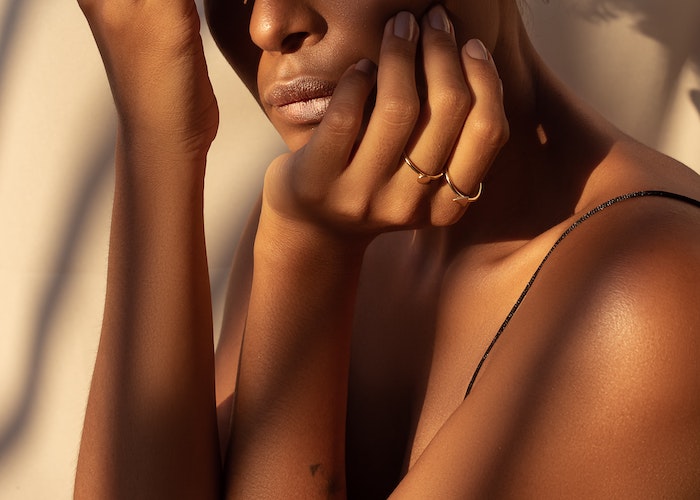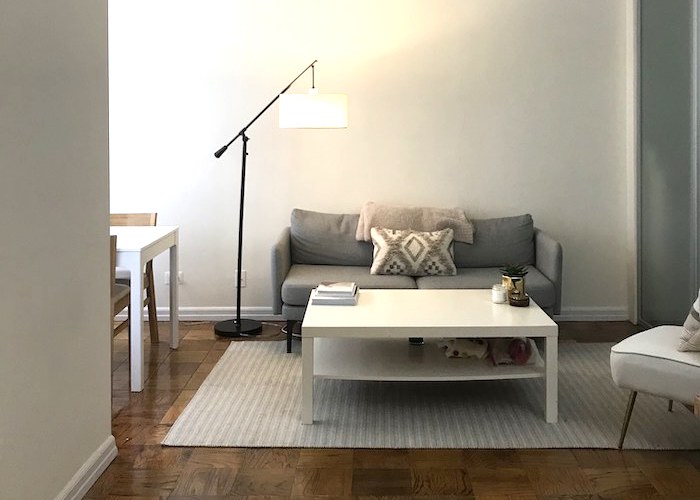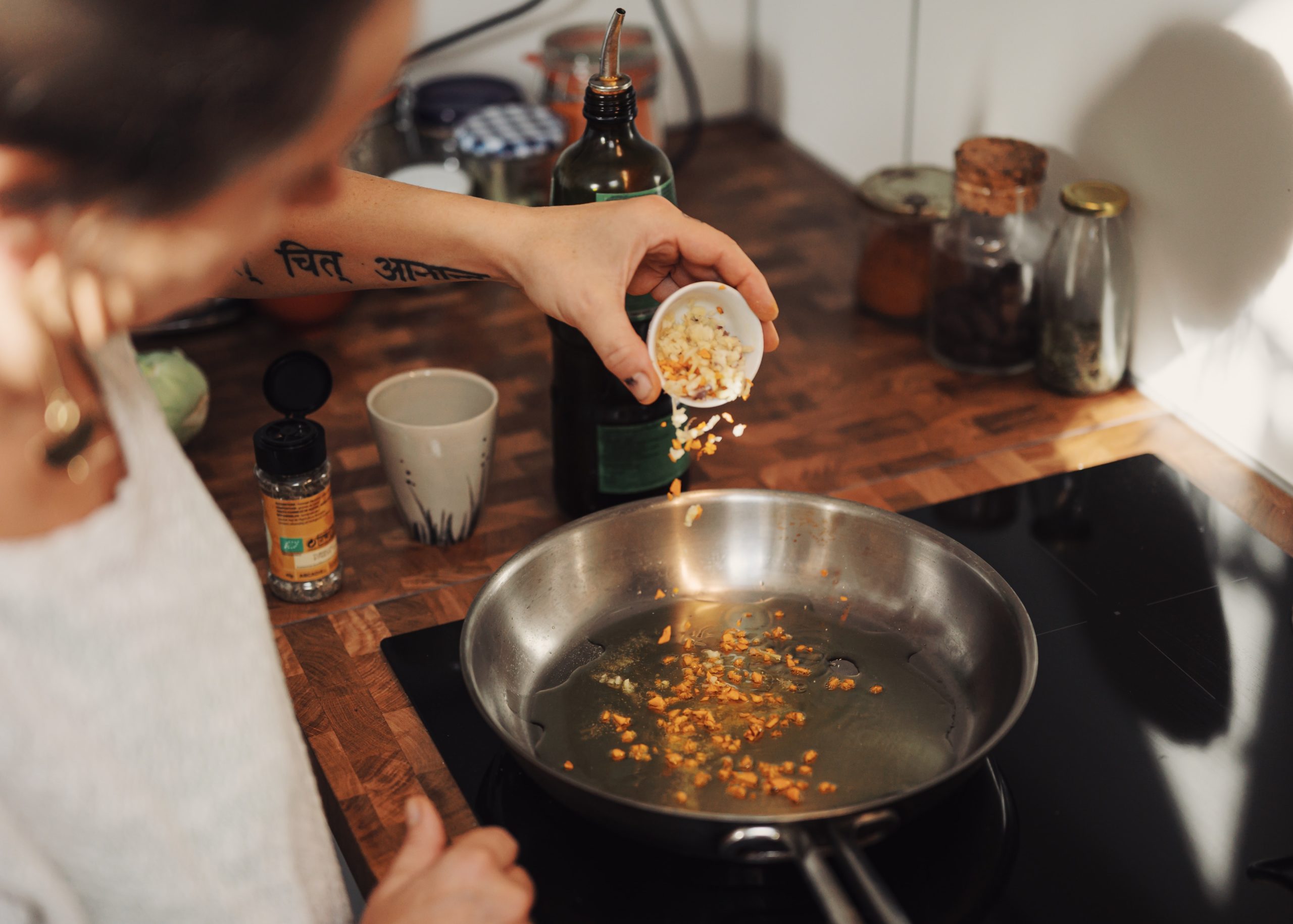6 Accessories That Weren’t Worth The Money On My Fitness Journey, & 4 That Were

I never saw myself becoming a gym junkie. I don’t think a lot of young girls do. When I was seven, I was identified as having a muscle disorder (hypotonia). As a child, I couldn’t perform basic physical tasks, like jump rope, or pour a glass of water. I attended physiotherapy to learn fine motor skills like tying my shoes and holding a pencil.
Now, at 29, I lift four times a week, ride my bike to and from work year-round, teach dance weekly, and climb when I can. I’d become a regular gym-goer in university, and even though my disorder means my progress will always be slow, the progress I did see led me further down the rabbit hole. I started to feel incredibly empowered, and before I knew it I was a gym junkie — I feel most at home in a gym, and I’m constantly thinking about working out. Which usually means I follow a lot of fitness Instagrams, and my eye is constantly drawn to things I’m “supposed to” have.
The women’s fitness space has grown vastly over the last decade. Women are finally seeing themselves in fitness advertisements (beyond home gym infomercials). It’s now cool as hell to be strong. But that also means there’s more potential to swindle women. Many brands, influencers, and magazines rely on that same empowerment that I and others experience to sell us stuff. You might experience a major surge of self-esteem from squatting our body weight for the first time, but you know what would give you even more self-esteem? Doing it in waist-training leggings.
I’ve compiled a list of some of the biggest wastes of money I’ve undertaken since I became a gym junkie — and the things that were totally worth the money as well.
Waste: Pre-workout supplement
When I realized the demands lifting put on my body, I decided that there were a few things food alone couldn’t do. Pre-workout supplements are designed to energize before you work out. Unfortunately, I was among the small number of people who had a bad reaction. Besides the expected jitters, I broke out into hives, which is a reaction some have to key ingredients such as Niacin or Beta-Alanine. I was told my body will “get used to” this, but I have no interest in putting my body through intense discomfort (which was so bad I couldn’t work out anyway) when I wasn’t sure how much I really needed this. If you really need a burst of energy before you work out, have a convenient source of carbs like a banana. But in my opinion, if you’re so exhausted you feel like you need an artificial pick-me-up, you probably shouldn’t be working out.
Worth it: Glutamine, BCAAs and/or other recovery supplements
My main supplement is and always will be food, but because lifting tends to break down protein stores (including muscles) faster than your body can reproduce them, sometimes food is not enough. I use a glutamine/BCAA mix powder that has a light fruity flavor and dissolve it into water, which I drink while I’m working out. These don’t aid in muscle gain, but they have been shown to aid in recovery, which is crucial if you’re going to get into lifting or any exercise that builds major muscle.
Waste: Protein gummies, candies, and most other single-serving novelties
I’m not 100% against things like protein bars (or shakes you can make at home), but after buying a few packs of protein gummies, I have to say, for the macronutrients you get, it’s less expensive and easier to adjust for your dietary needs to make something at home. These products usually do nothing to satiate you and can cost up to $5 for a serving.
Worth it: Protein powder
There are many types of protein (you can even get some that have glutamine and BCAAs). They can be pricey (I’ve paid from $40 to $60 for a tub, which lasts a long time), and it can be a lot just to find out what you like. There’s lots to consider: what do you want your source to be (whey, brown rice, pumpkin seed, pea, soy, a mix)? Do you care about sugar or artificial sweetener? Do you want flavor or not? I am serious enough about my protein intake (being vegan) to invest in two kinds: one plain, unflavored (pumpkin seed-based) and one chocolate flavored (Vega brand). I often use the plain one to make far more than just smoothies: muffins, pizza crust, oatmeal and more.
Waste: Yoga blocks and straps
I’ve been into yoga on and off since middle school. For a while, I did it several times a week at a studio. I got very serious about it and bought a block and straps from Lululemon, each for just under $20. Unfortunately, these have accumulated almost no use. Most gyms and studios have blocks, and a large number have straps as well. You can’t take them home, but there are easy subs for these items at home. Small boxes, as long as you’re not putting all your weight on them (i.e. headstands) can sub for a block, and towels are a comfy substitute for straps (which can sometimes be tough to figure out anyway).
Worth it: Resistance bands
Resistance bands are great to add to your home or gym workouts. Gyms rarely provide their own, and they stretch way too easily for me to want to share them anyway. I prefer looped resistance bands to strips. What makes resistance bands worth the money — they can run from $10 to $20 for a set — is that they’re great for many kinds of workouts. You can do leg and shoulder resistance training with a band alone (like lateral walks), or you can add a band for weight work like deadlifts and squats to add extra burn in your glutes. They’re also fantastic for stretching and functional fitness in the morning or at night.
Waste: Over-ear wireless headphones
Wireless headphones are a must for the gym. But while you definitely need to shop around, as more expensive doesn’t necessarily mean more suited to your needs. I had received a gift card for a local record store and purchased a pair of Urbanears wireless headphones, which at the time ran $110 CAD. I figured: more expensive must mean better, right? But they weren’t great for my workouts. The range on them isn’t huge, so I had to still carry my phone with me to pick up weights or get a drink of water. The casing for the ear padding also ripped open after less than a year, and there are other common technical problems. Some people prefer big headphones to earbuds at the gym, but I would caution against getting large headphones that have touch controls on the side — random overhead movements can cause your music to pause, skip, all that fun stuff. Oh, and never get headphones like this in white. Trust my greasy-haired self.
Worth it: Modest, small earbuds
When I decided my big headphones didn’t do the trick, I looked at downsizing. There are far more cheap options with earbuds, whereas over-ear headphones are more likely to be expensive. I didn’t go for off-brand ($30 CAD from Skullcandy), but I was no longer interested in chancing a super-expensive pair. Small earbuds are less susceptible to damage and don’t limit range of motion as much. I’d advise the kind with rubber over the earphones (as opposed to AirPods and other all-plastic brands) if you’re into heavy cardio.
Waste: A ring protector
Ring protectors don’t cost much (most are $10 or less), but something doesn’t have to be expensive to be a waste of money. I’m not normally attached to wearing my wedding ring (I take it off to cook, clean, and do pretty much anything), but it has served as a buffer for guys who like to use the gym to pick up ladies. I briefly started wearing it to the gym, with a ring protector, but it was ridiculously uncomfortable. Plus, while the protector keeps the ring safe from damage, your finger can still get hurt by your ring if it swells. Do yourself a favor: skip the ring protector (and the ring). You (and your ring) aren’t responsible for dudes’ behavior.
Worth it: A good lock
The $10 I spent on a ring protector should have just gone to a lock right away. No matter how trustworthy you think the community at your gym or studio are, whether or not you’re leaving “valuables” in there (a coat is valuable, a glove is valuable), you need a lock. I got a customizable word lock, so I don’t even have to worry about remembering some random bunch of numbers (confession: my combo is a dirty word).
Waste: A cell phone arm strap
I’ve gone through a number of these (all around $20 to $30) before giving up. An arm strap might be useful if you’re into outdoor running, but otherwise, I’m not convinced anyone needs them. Every time I got an arm strap, I’d spend most of my time having to annoyingly pull my phone out of the case to answer texts/change songs/log my workout/distract myself on social media between sets. Lots of arm straps also aren’t great for numerous types/sizes of phones, so if you change your phone to one with different dimensions (or a headphone jack in a different place), odds are you’re going to end up with an ill-fitting strap. These days, I just put my phone on the floor or on my bench (out of the way of clumsy feet) while I’m lifting, and on the respective ledge/bucket on whatever cardio equipment I’m using.
Worth it: A comfortable sweater or thermal
When it comes to running shoes, leggings, and sports bras, I couldn’t care less about the prestige vs. value brand debate. But I am serious about hoodies and thermals. My body temperature fluctuates a lot at the gym, and I like to be able to readily cover up and strip down when I can. For me, T-shirts aren’t enough (and I did get sick of being “that girl wearing the T-shirt she will clearly go home and go to sleep in after this.” I have some dignity). You don’t want to overheat, but your body being warm and cozy is a good thing — keeping yourself cold at any point in your workout will not yield you any favors. So have something you can take on and off that doesn’t make you look like you just rolled out of bed. My favorite hoodie cost $40 USD, which is not particularly expensive, and the brand donates 5% of proceeds to Planned Parenthood (plus, they have lots of blogs and podcasts dedicated to fighting gender gatekeeping and empowering women in fitness).
Bree Rody-Mantha is a full-time business journalist and part-time dance teacher based in Toronto. She covered Toronto City Hall during the Rob Ford era before transitioning to business journalism. Her areas of specialty include the influencer market, advertising, media buying and technology. Follow her on Twitter.




